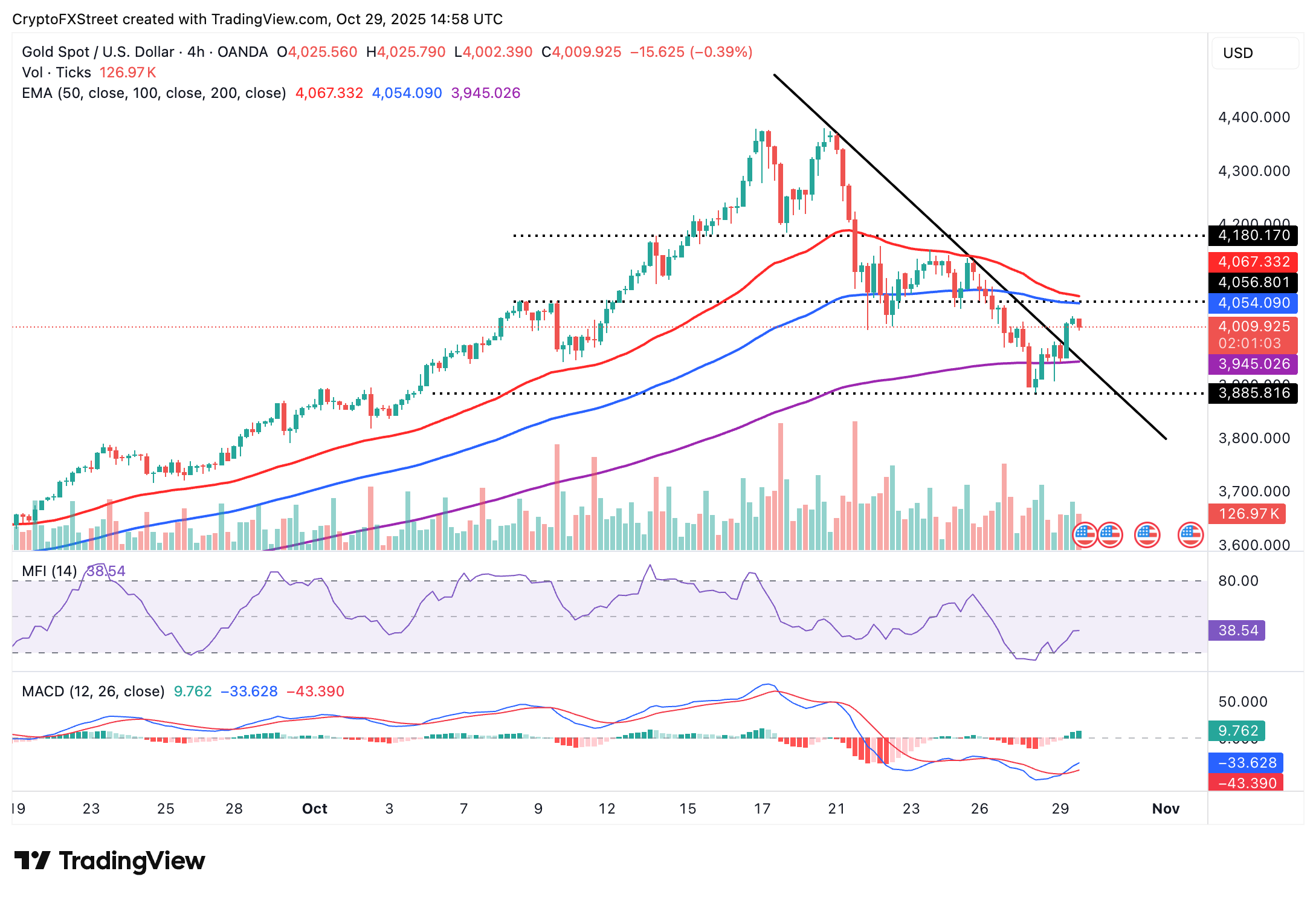Tether's tokenized Gold hits $2 billion market value amid strong demand
- Tether tokenized Gold shows significant strength, with its market value surpassing $2 billion.
- Total physical Gold reserves increase to 376K fine troy ounces, with approximately 522K XAU₮ in circulation.
- Gold rises above $4,000 on Wednesday.
Tether Gold (XAU₮), a tokenized Gold asset from Tether, the company behind USDT, the world's leading stablecoin, surged past the $2 billion valuation threshold last week, driven by surging demand for real-world assets (RWAs).
Tether Gold market value explodes amid rush for RWAs
Tether Gold market value surged to $1.44 billion in the third quarter, underscoring the growing interest in the tokenization of real-world assets amid record-breaking Gold (XAU) prices.
According to a report released on Tuesday, Tether Gold has continued to demonstrate remarkable strength in the fourth quarter, with its market value hitting $2.1 billion last week.
TG Commodities, the company that launched Tether Gold tokens, stated that as of September 30, the total physical Gold reserves stood at approximately 375,572 fine troy ounces, with 522,089 XAU₮ tokens in circulation.
At the time, Tether had sold approximately 235,820 XAU₮ tokens, leaving around 139,751 XAU₮ tokens available for sale.
Tether Gold is backed 1:1, whereby one XAU₮ token mirrors the value of one fine troy ounce of physical Gold in the reserves. The XAU₮ token is regulatory-compliant and fully executes on blockchain technology.
Tether holds its Gold reserves in Switzerland, complying with the London Good Delivery standards.
"Tether Gold proves that real-world assets can thrive on-chain without compromise," Tether CEO, Paolo Ardoino, stated. "With gold prices at all-time highs and institutional interest in tokenized assets growing, XAU₮ represents the future of asset ownership, where physical security meets digital freedom."
Tether Gold offers a liquid, tokenized Gold asset, bringing freedom and control back to investors. Macroeconomic uncertainty, inflation, and geopolitical tensions are among the factors fuelling the rush for tokenized real-world assets such as Tether Gold.
Institutional and retail investors are increasingly turning to digital Gold tokens as a hedge against depreciating fiat currencies and volatile cryptocurrency prices.
"Tether Gold continues to stand out as a reliable, liquid, and fully backed digital asset that bridges traditional value with the flexibility of blockchain," Tether stated.
The tokenization of real-world assets goes beyond Tether Gold, as asset managers are diversifying into different asset classes, including United States (US) Government Treasuries, bonds, and real estate.
Gold price holds above $4,000
Gold is trading above $4,000 per ounce at the time of writing on Wednesday. The yellow precious metal has extended the drawdown from its record high of $4,381 reached on October 20, amid potential profit-taking and portfolio diversification.
The Relative Strength Index (RSI) on the 4-hour chart is starting to weaken, dropping to 37, suggesting a decline in bullish momentum. Lower RSI readings approaching oversold territory imply a top-heavy structure, which may increase the odds of an extended pullback.

XAU/USD 4-hour chart
Still, a buy signal from the Moving Average Convergence Divergence (MACD) indicator in the same 4-hour time frame is encouraging traders to increase risk exposure. Hence, a steady reversal above the $4,000 support level toward the 100-period Exponential Moving Average (EMA) at $4,054 may reinforce Gold's short-term bullish grip.
Bitcoin, altcoins, stablecoins FAQs
Bitcoin is the largest cryptocurrency by market capitalization, a virtual currency designed to serve as money. This form of payment cannot be controlled by any one person, group, or entity, which eliminates the need for third-party participation during financial transactions.
Altcoins are any cryptocurrency apart from Bitcoin, but some also regard Ethereum as a non-altcoin because it is from these two cryptocurrencies that forking happens. If this is true, then Litecoin is the first altcoin, forked from the Bitcoin protocol and, therefore, an “improved” version of it.
Stablecoins are cryptocurrencies designed to have a stable price, with their value backed by a reserve of the asset it represents. To achieve this, the value of any one stablecoin is pegged to a commodity or financial instrument, such as the US Dollar (USD), with its supply regulated by an algorithm or demand. The main goal of stablecoins is to provide an on/off-ramp for investors willing to trade and invest in cryptocurrencies. Stablecoins also allow investors to store value since cryptocurrencies, in general, are subject to volatility.
Bitcoin dominance is the ratio of Bitcoin's market capitalization to the total market capitalization of all cryptocurrencies combined. It provides a clear picture of Bitcoin’s interest among investors. A high BTC dominance typically happens before and during a bull run, in which investors resort to investing in relatively stable and high market capitalization cryptocurrency like Bitcoin. A drop in BTC dominance usually means that investors are moving their capital and/or profits to altcoins in a quest for higher returns, which usually triggers an explosion of altcoin rallies.


